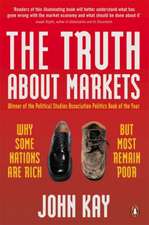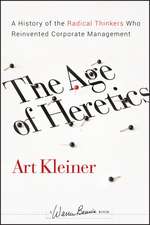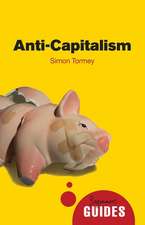How the Chinese Economy Works
Autor Rongxing Guoen Limba Engleză Hardback – 28 iun 2007
| Toate formatele și edițiile | Preț | Express |
|---|---|---|
| Paperback (1) | 645.60 lei 6-8 săpt. | |
| Springer International Publishing – 7 iul 2018 | 645.60 lei 6-8 săpt. | |
| Hardback (2) | 644.82 lei 6-8 săpt. | |
| Palgrave Macmillan UK – 28 iun 2007 | 644.82 lei 6-8 săpt. | |
| Springer International Publishing – 16 dec 2016 | 652.31 lei 6-8 săpt. |
Preț: 644.82 lei
Preț vechi: 758.60 lei
-15% Nou
Puncte Express: 967
Preț estimativ în valută:
123.40€ • 128.36$ • 101.88£
123.40€ • 128.36$ • 101.88£
Carte tipărită la comandă
Livrare economică 15-29 aprilie
Preluare comenzi: 021 569.72.76
Specificații
ISBN-13: 9780230542747
ISBN-10: 0230542743
Pagini: 333
Ilustrații: XXVIII, 333 p.
Dimensiuni: 140 x 216 x 25 mm
Greutate: 0.54 kg
Ediția:2nd ed. 2007
Editura: Palgrave Macmillan UK
Colecția Palgrave Macmillan
Locul publicării:London, United Kingdom
ISBN-10: 0230542743
Pagini: 333
Ilustrații: XXVIII, 333 p.
Dimensiuni: 140 x 216 x 25 mm
Greutate: 0.54 kg
Ediția:2nd ed. 2007
Editura: Palgrave Macmillan UK
Colecția Palgrave Macmillan
Locul publicării:London, United Kingdom
Cuprins
Contents List of Boxes List of Figures List of Tables Preface List of Abbreviations Foreword by L. Squire Notes to Readers Map Executive Summary A Brief History of China The Origins of the Nation Rise and Fall of the Empire China in the New Millennium The Spatial Division of the Chinese Economy Provincial Administrations Great Regions Coastal and Inland Areas Eastern, Central and Western Belts Southern and Northern Parts China's Economic Foundations Physical Capital Human Capital Political and Institutional Bases Cultural Issues Policy Implications China's Economic Systems in Transition General Review Development and Planning Labour and Employment Production and Ownership Public Finance and Banking External Economic Relations Summary How Well the Chinese-Style Reform Performs Chinese-Style Reform, the (Un)successful Cases Simulating the Reform Process: A Model Interest Groups, Stakeholders and Reform Can the Chinese-Style Reforms Be Sustained? Concluding Remarks A Multiregional Economic Comparison About Statistical Data Macroeconomic Indicators Real Living Standards Inequality Index Concluding Remarks Can the Chinese Economy Be Spatially Optimized? Spatial Efficiency of Authoritarianism: A Theory Spatial Separation in China China's Search for Spatial Integration West China Development Strategy Concluding Remarks Industrialization and Technological Progress China's Efforts on Industrialization Post-Reform Industrialization Rural Industrialization Technological Progress Population, Resource and Sustainable Development General Background China's Population Problems Natural and Environmental Resources Environmental Protection in China Summary Economic Internationalization and China Historical Review Foreign Investment Foreign Trade Summary Comparative Economics for the Greater China Historical Evolution A Multiregional Economic Comparison Cross-Taiwan Strait Ecomonic Relations Future Perspective Appendices Appendix I: Basic conditions of the ethnic minorities in China Appendix II: A list of major reforms and their outcomes (1978-2005) Appendix III: Specification to a model on system dynamics Appendix IV: Games between the Chinese radicals and conservatives Appendix V: Literature on the determinates of foreign trade Appendix VI: Indexes of China's cultural linkages with the rest of the world Notes Bibliography Index
Recenzii
Selected as 'Best Book on Chinese Economy' by Questia librarians
'The world is watching the miraculous development of the Chinese economy with varied emotions: envy, hope, concern... The richness of the material and the clarity of the analysis [in this book] will perhaps make the envious countries even more so; they will certainly provide valuable information for those hoping to learn from the Chinese experience; and they will provide a firmer basis for assessing the concerns of those competing in output and input markets.' - from the Foreword by Lyn Squire, President of Global Development Network
'The world is watching the miraculous development of the Chinese economy with varied emotions: envy, hope, concern... The richness of the material and the clarity of the analysis [in this book] will perhaps make the envious countries even more so; they will certainly provide valuable information for those hoping to learn from the Chinese experience; and they will provide a firmer basis for assessing the concerns of those competing in output and input markets.' - from the Foreword by Lyn Squire, President of Global Development Network
Notă biografică
RONGXING GUO has worked and taught at: Korea University, Seoul, Korea; FEEM, Milan, Italy; Trier University, Trier, Germany; CUMT, Xuzhou and Beijing, China; Peking University, Beijing, China; and ANU, Canberrra, Australia. Guo's recent books include Cultural Influences on Economic Analysis, The Handbook of Conflict Management, Cross-Border Resource Management, and Border-Regional Economics.
Textul de pe ultima copertă
This fourth revised edition sets out to analyze and compare the operational mechanisms of the Chinese economy between the pre- and post-reform periods and through national, regional and local dimensions. It examines the driving forces – both endogenous and exogenous – that have influenced China’s economic development during the past decades. Both positive and negative consequences of the Chinese economic transformation have been clarified. A multiregional comparison of the Chinese economy is conducted in terms of natural and human resources, institutional evolution, as well as economic and social performances. This enlarged edition includes three new chapters on cultural diversity; natural and environmental resources; and, political and administrative systems. Many of the original chapters have also been significantly revised, expanded and updated according to more recent research.
Caracteristici
Provides an authoritative analysis of the various mechanisms at work in the Chinese economy Offers useful discussion on the current socio-economic trends in China, and reflects upon the growing significance of China on the world stage Focuses on both national and regional level to provide a fully comprehensive work














